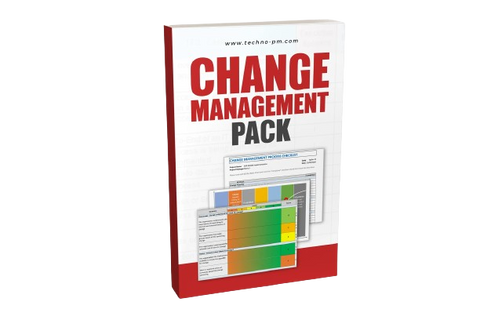ADKAR Model - Change Competency Assessment
ADKAR Change Management
If you have ever been involved in a project, you certainly know by now that change management is a fundamental competency to have if the project is to be successful. Take it beyond projects, and you will recognize that same need – whether the business is reinventing itself, or you are moving offices elsewhere, or if you have to allow for everyone to be able to work from home all of a sudden – it’s all about change and how effective you, as a leader or as an organization, are in embedding that change in a painless, disciplined, sustainable way.

ADKAR Model - Change Competency Assessment
Change Competency Assessment
Although change management is a competency that would benefit everyone, it is not always thoroughly considered. Unfortunately, the management of change is often still the management of chance.
To address this scenario, consider doing a change competency assessment. I would like to introduce you to the ADKAR® model, one of the most popular change management tools, developed by PROSCI®.
Prosci ADKAR Model for Change Competency Assessment
ADKAR is a results-oriented model indented for individual and organizational change; that is, it can be used to assess individual competency and provide a more holistic view of the change management capability in the organization, which is way more than the sum of the parts. A successful change integrates individual change management and organizational change management, and that is exactly what ADKAR advocates.
At this point, you are certainly wondering what ADKAR means. ADKAR is an acronym for a structured number of steps to follow when handling change, so let me break it down for you:

A – Awareness:
Are you aware of the upcoming change? The first step assesses if people recognize change or come to them out of the blue. Some level of information about the change, even if minimal and/or high-level, is necessary to prepare people for the change and take them on the journey with you. As an organization, you might not have all the answers yet, but letting others know where you stand and what you intend to do next will enable the necessary visibility for change, promoting trust and engagement. This awareness can be facilitated through a newsletter, an announcement, or simply by hosting a conversation.
D – Desire:
Do you have the desire for change? This step is about instilling an appetite for change in individuals, now that they are aware that change is coming. The desire for change can entail identifying what people’s pain points will be removed by this change and leverage such knowledge or simply using teasers, a sneak peek, or games to facilitate the interest and capture the attention of people. If this step is done correctly, people will want to be involved in the change.
 ADKAR Change Management
ADKAR Change Management
K – Knowledge:
This is the time to explain and clarify what the change will entail in detail: its application and impact on the organization and individuals. This step can be implemented through guidance notes, processes, training, or a demonstration. This step's successful completion should allow individuals to be confident and clear about what the change is and what it is not.
A – Ability:
The ability step refers to the actual application of the knowledge gained from the previous step and will see individuals being provided with the necessary tools to be able to use that knowledge in practice, such as by managers giving them new projects to apply certain competence, by training using pragmatic exercises, or simply by practicing that competence over time. This step is all about time and recurrence to embed the competency.
R – Reinforcement:
It’s easy to be complacent or to forget about a certain message after some time. Thus reinforcement is key. Being a refresher training, the emphasis and cascading of that message by managers, or its strengthening at regular intervals, many techniques can promote reinforcement. After all, habits are formed of repetition and consistency – use them to ensure that change remains relevant.
Now that you know try it! The ADKAR assessment tool can be done as a self-assessment or with/by a change manager, and it will give you the needed visibility to drive your change action plan.
I wish we would all be born a change specialist (that would make life so much easier, wouldn’t it?); however, as with any competency, it needs to be assessed and developed over time. Some of you might have had formal education in change management; others might have not, but you have been supporting change initiatives for a long time, while others might be totally new in the field and have no clue what I mean by change management.

Regardless of your situation, the first step in the assessment and competency development process is to take the time to reflect on your current situation, that is, to identify your as-is state. You don’t know what you don’t know; thus, being conscious of your starting point is and level of competence will give you an advantage in drafting your roadmap to advance that competence.
As with Alice in Wonderland, "If you don't know where you're going, any road will take you there." Fortunately, you do know where you are going – that happy place where change happens!




